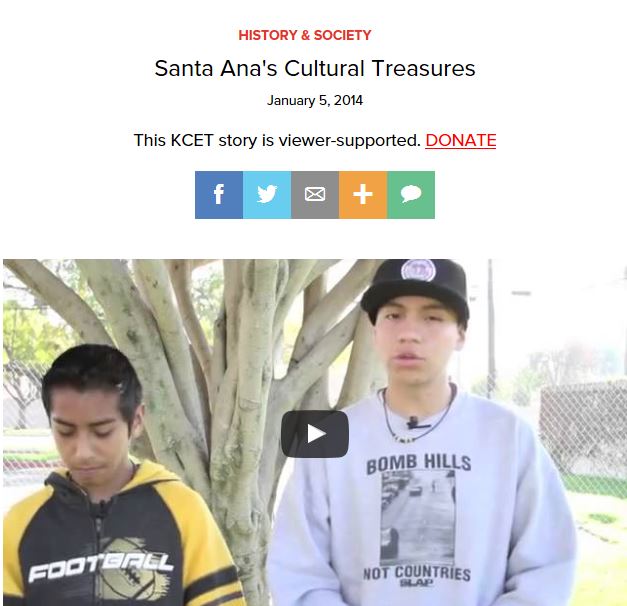
The Power of Stories
This webpage has a link to a video that describes the cultural treasures of one community in California. The video highlights youth working for change and developing leadership through civic engagement and advocacy.
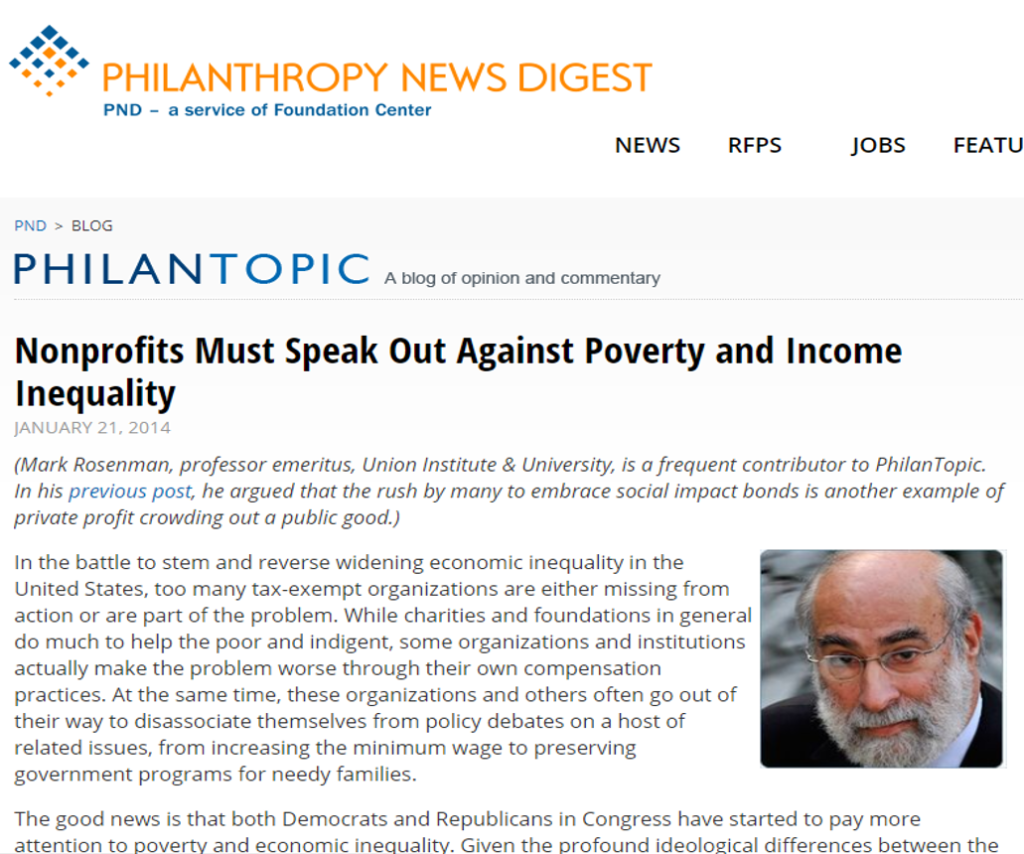
Nonprofits Must Speak Out about Poverty and Income Inequality
This paper makes the case for nonprofits to work to ameliorate income inequality beyond providing services to those who are already poor or are in danger of falling out of the shrinking middle class and into poverty.
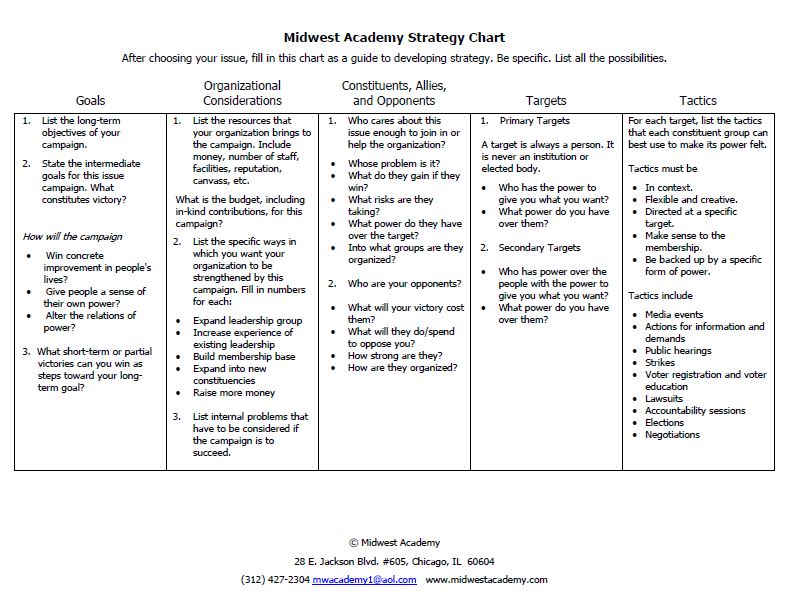
Midwest Academy Strategy Chart
This handout guides the organization to explore what is currently happening within the organization as well as identifying those who will work with you and those who might block your efforts.
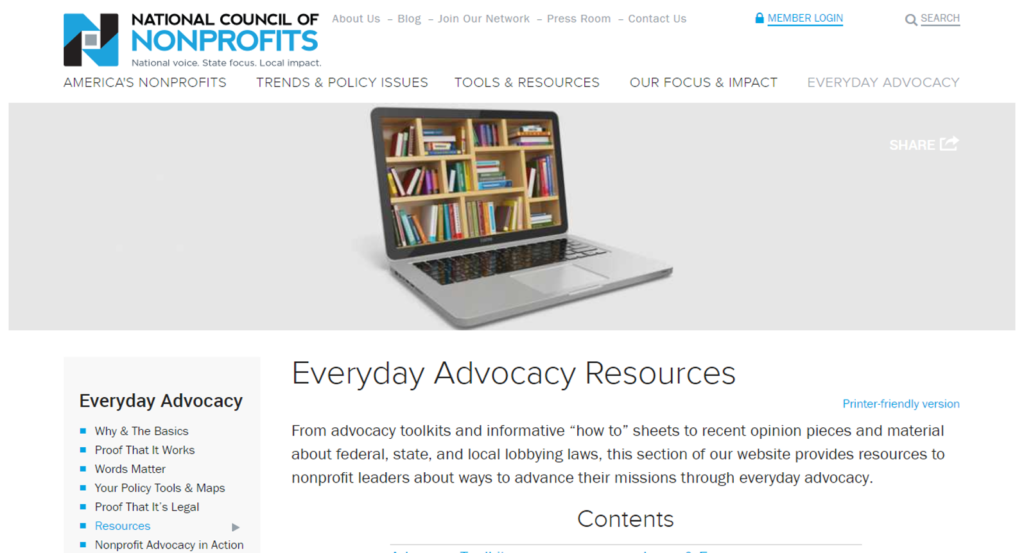
Everyday Advocacy Resources
From advocacy toolkits and informative “how to” sheets to recent opinion pieces and material about federal, state, and local lobbying laws, this section of the National Council of Nonprofits website provides resources to nonprofit leaders about ways to advance their missions through everyday advocacy.
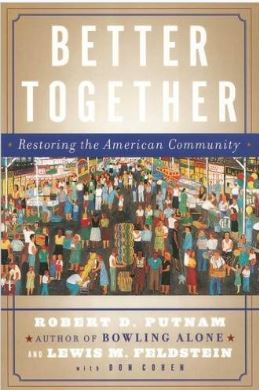
Better Together
This website is the portal to Better Together, the 2000 report that identified Americas civic apathy and ways to revitalize it. There are links to the book, Bowling Alone, which describes how isolated members of our society have become, as well as a social capital primer, research and measurement tools.
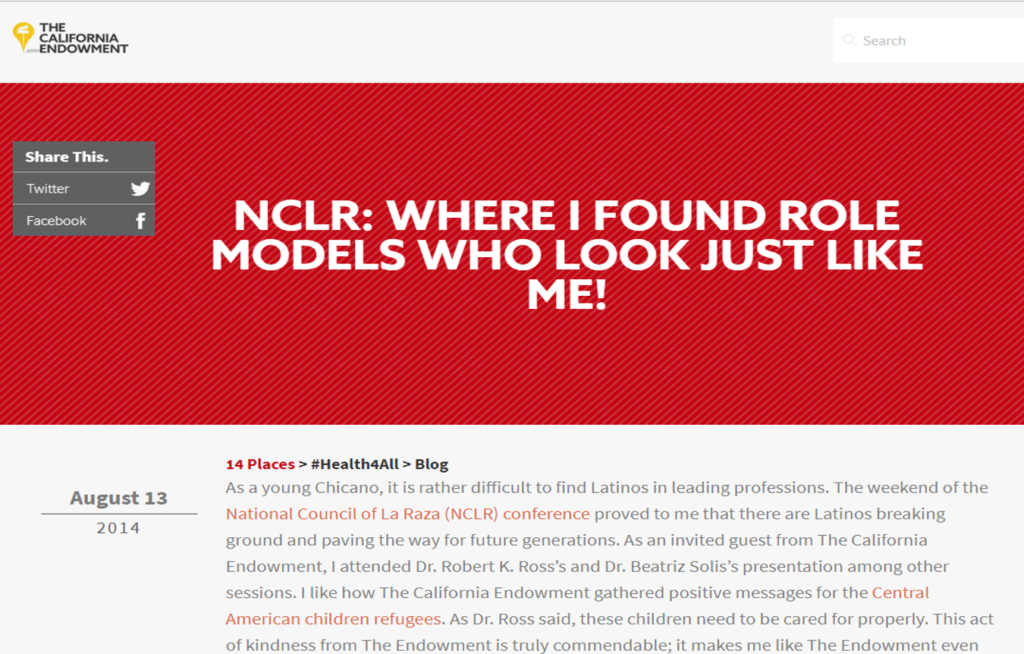
Where I Found Role Models Who Look Just Like Me
This motivating story by a youth leader can be effective to spark conversation about engaging often overlooked constituents for leadership roles.
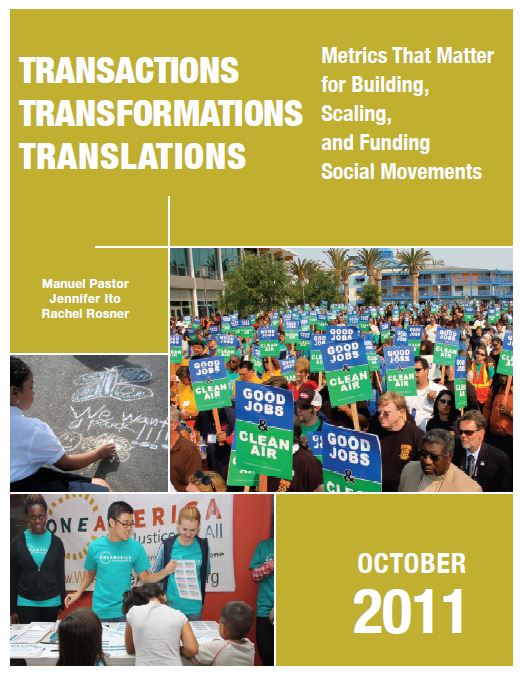
Transactions, Transformations, Translations
“Transactions, Transformations, Translations: Metrics That
Matter for Building, Scaling, and Funding Social Movements” is a way of looking at organizational growth and the alliance building that brings groups together. This evaluation approach can capture the importance of narrative and numbers, of politics and policies, of transformation as well as transaction.
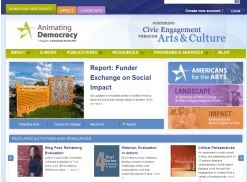
Animating Democracy | IMPACT
Animating Democracy, a program of Americans for the Arts, has an online storehouse of resources aimed at helping arts organizations evaluate the social impact of creative work that aims to make social change. Although the site is intended for arts-focused organizations, many of the resources offered are applicable to the work of a wide variety of service agencies interested social change work.
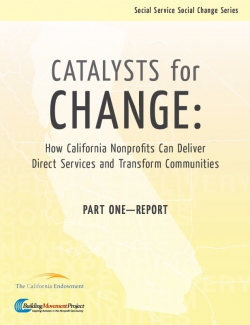
Catalysts for Change: How California Nonprofits Can Deliver Direct Services and Transform Communities (REPORT)
With the support of The California Endowment, the Building Movement Project surveyed over 450 California-based nonprofit direct service providers to explore whether they are integrating social change activities into their work. The survey results, which are discussed in Part One of Catalysts for Change, demonstrate that the language and activities of civic engagement, constituent voice, and social change are familiar to service providers in California, even if they may not be universally agreed upon. The range of activities beyond services reveals a clear need for more support and direction for service providers that are interested in addressing the systemic causes of problems facing clients. The report offers recommendations that speak to the roles funders, nonprofit technical assistance providers, intermediaries, academics, and others can play in helping organizations integrate social change-oriented efforts into their existing direct service work.
To read Part Two: Case Studies of Catalysts for Change, click here.

Catalysts for Change: How California Nonprofits Can Deliver Direct Services and Transform Communities (CASE STUDIES)
With the support of The California Endowment, the Building Movement Project surveyed over 450 California-based nonprofit direct service providers to explore whether they are integrating social change activities into their work. Part Two of Catalysts for Change offers five in-depth case studies of California-based health and social service providers that are engaging in non-service activities to address systemic issues – including poverty, inequality, and health disparities – as well as building the voice and power of their constituents. The case studies illustrate and highlight many of the concepts explored in Part One of Catalysts for Change and they give readers the opportunity to delve more deeply into the work of different organizations that are engaged in direct service delivery and other change-oriented activities.
To read Part One: Report of Catalysts for Change, click here.




